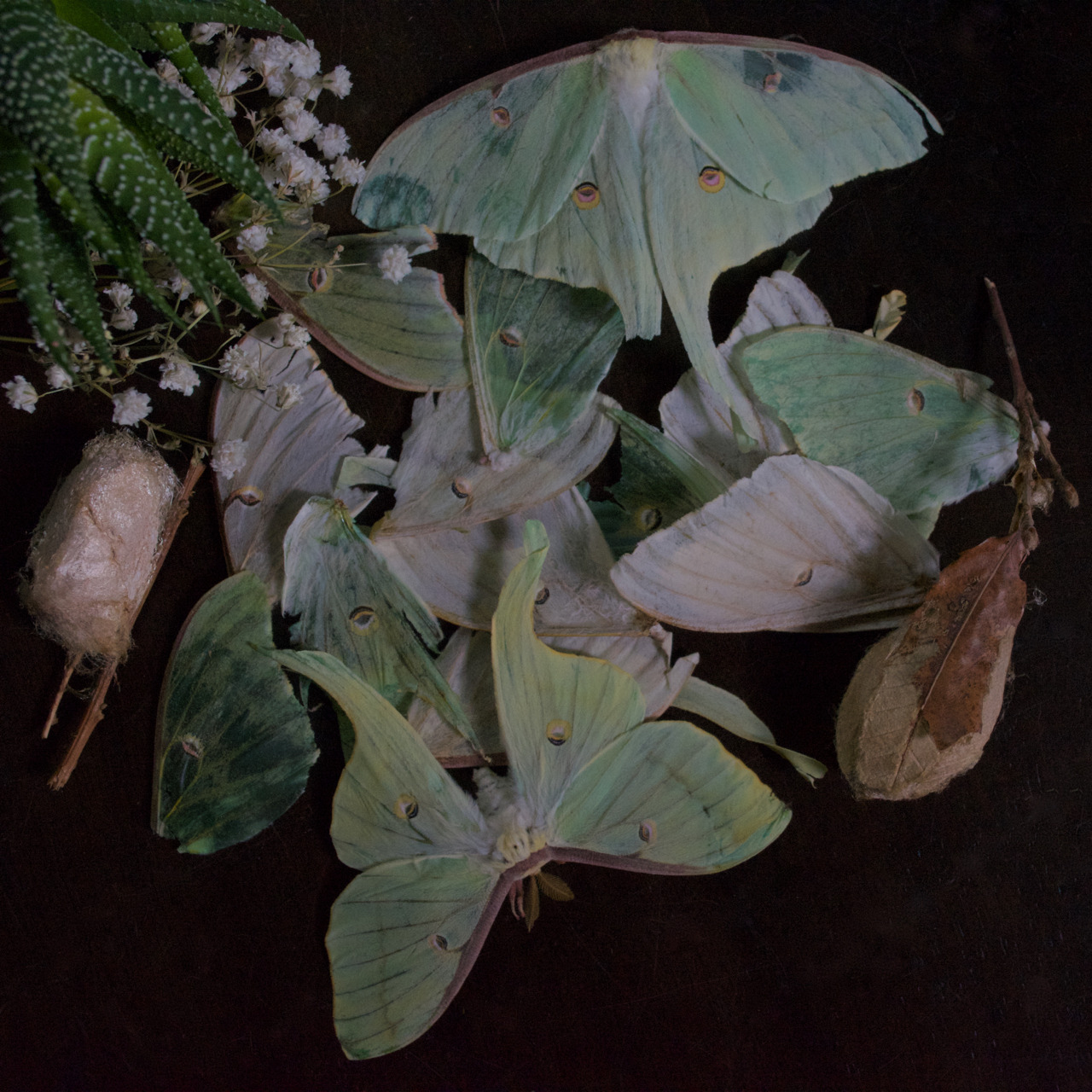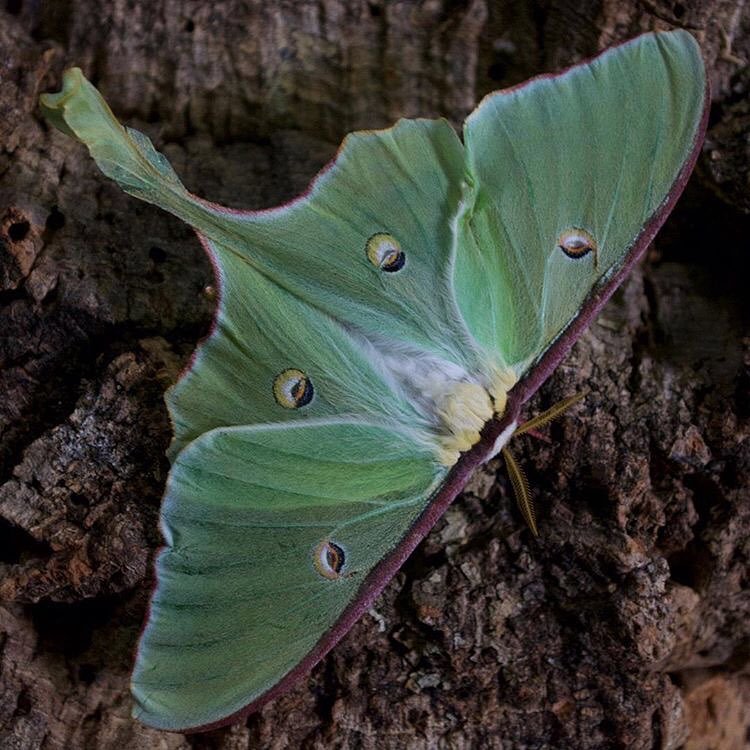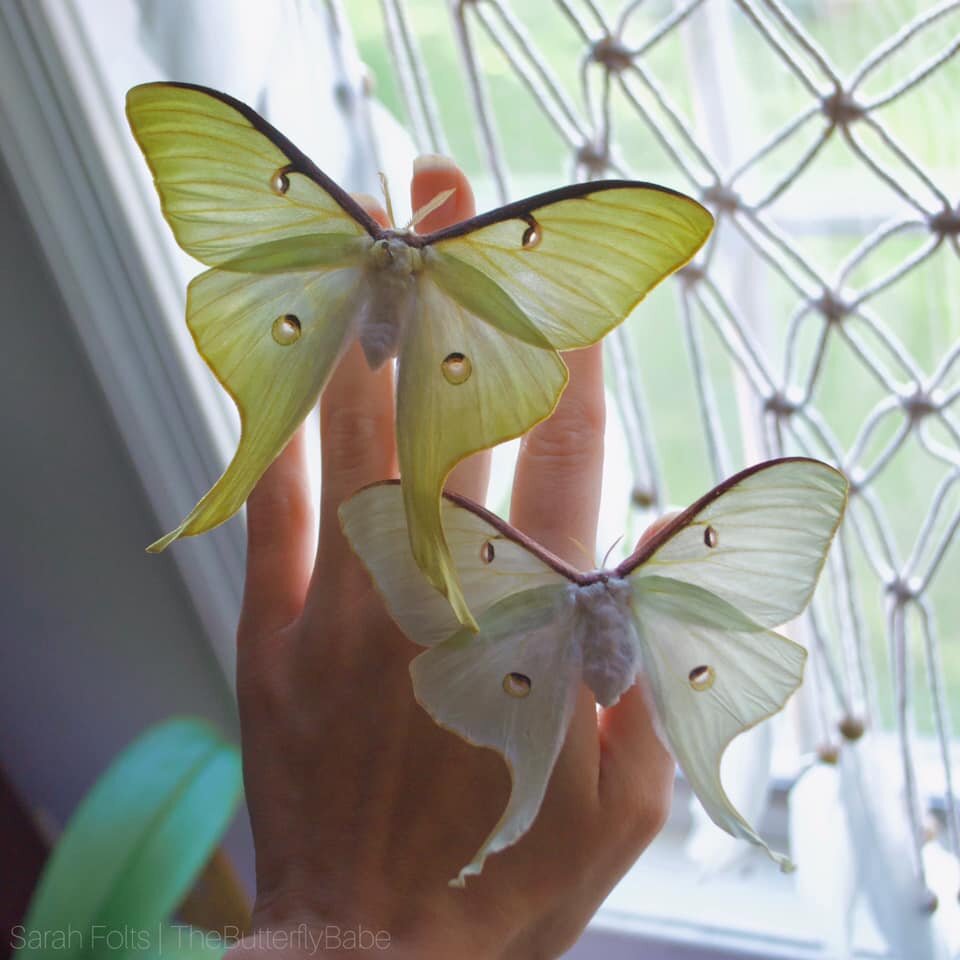The Luna Moth - Actias luna
Luna Moth
The Luna moth or American Moon Moth, Actias luna, is only found in the Americas.
Newly hatched caterpillars feed constantly growing approximately 2,700 times their weight in just one month! The larvae have the ability to emit warning clicking sounds when disturbed. They can also regurgitate their intestinal contents, a deterrent effect on a variety of predators. Their cocoons are spun with a single silk strand to protect them during pupation while they transform into a moth.
With no mouth or digestive tract, unable to eat as an adult, the moth uses the last of its energy stored as a caterpillar to find a mate and produce the next generation. After about a week the exhausted moth passes away and the next generation has begun. While a week might seem like a very short time for us, it is a lifetime for these creatures.
The Moth’s elongated hindwing tails are thought to confuse the echolocation detection used by bats. Their predators usually aim to grab these long tails, which simply split or fall off allowing the moth to continue flying and make its escape.
The easiest way to distinguish the sex of a silk moth is by looking at their antennae. Females have very slender antennae while males have wide,feathery antennae. The male’s antennae are wider because he uses them to find the source of the female's pheromones wafting through the air. Since the male does all the seeking while the female stays put, her antennae are not as developed as his.
There has been concern that light pollution from man-made sources, like street lights, may deter silk moths from mating. Luna moths, once very common, are now being threatened in some areas due to habitat loss.




